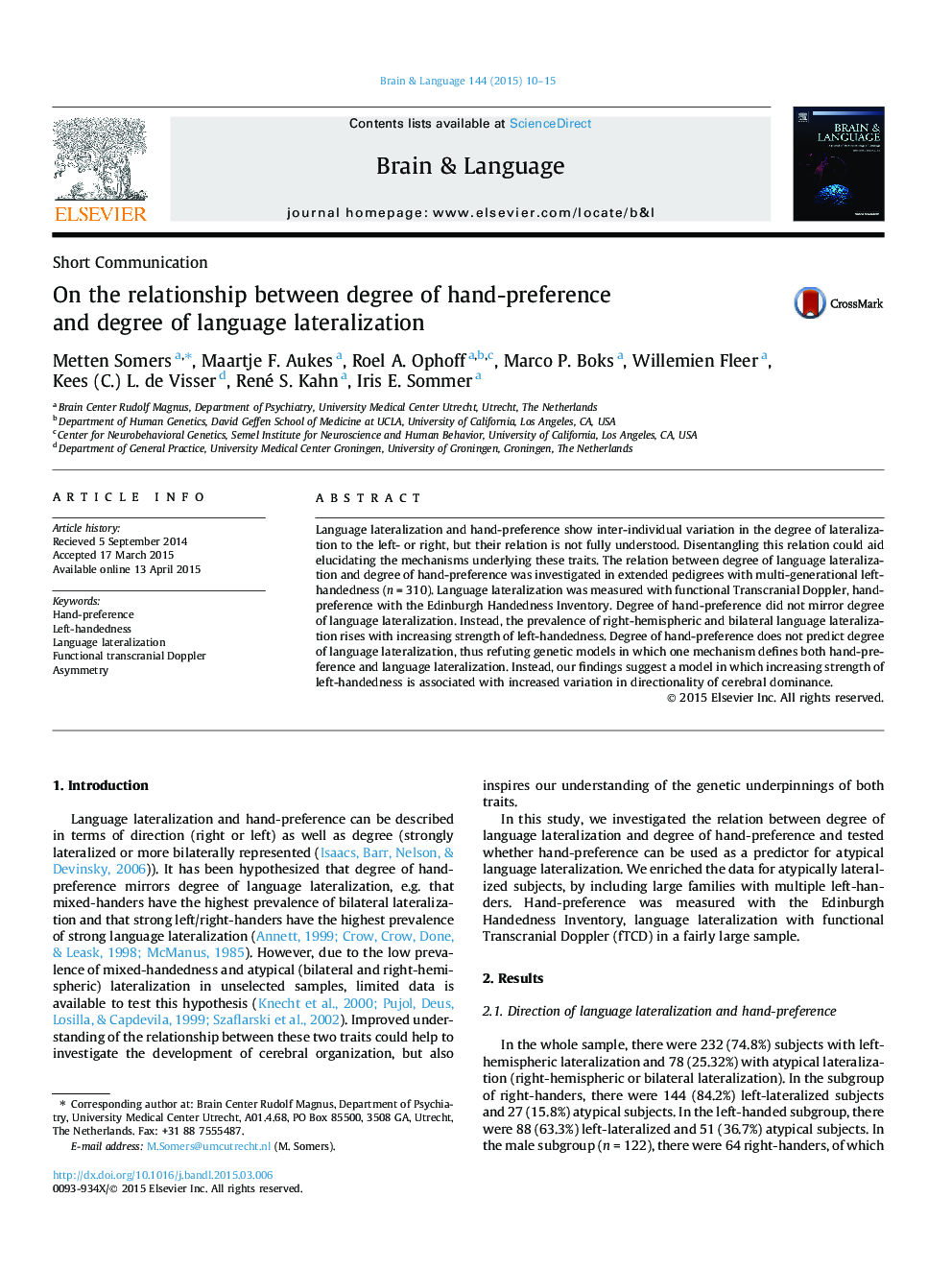| Article ID | Journal | Published Year | Pages | File Type |
|---|---|---|---|---|
| 925271 | Brain and Language | 2015 | 6 Pages |
•We tested the relation between degree of language lateralization and degree of hand-preference.•Degree of hand-preference does not mirror degree of language lateralization.•The prevalence of atypical lateralization rises with increasing strength of left-handedness.•Degree of hand-preference cannot serve as a predictor for degree of language lateralization.•Our results refute a single monogenetic model for both traits.
Language lateralization and hand-preference show inter-individual variation in the degree of lateralization to the left- or right, but their relation is not fully understood. Disentangling this relation could aid elucidating the mechanisms underlying these traits. The relation between degree of language lateralization and degree of hand-preference was investigated in extended pedigrees with multi-generational left-handedness (n = 310). Language lateralization was measured with functional Transcranial Doppler, hand-preference with the Edinburgh Handedness Inventory. Degree of hand-preference did not mirror degree of language lateralization. Instead, the prevalence of right-hemispheric and bilateral language lateralization rises with increasing strength of left-handedness. Degree of hand-preference does not predict degree of language lateralization, thus refuting genetic models in which one mechanism defines both hand-preference and language lateralization. Instead, our findings suggest a model in which increasing strength of left-handedness is associated with increased variation in directionality of cerebral dominance.
